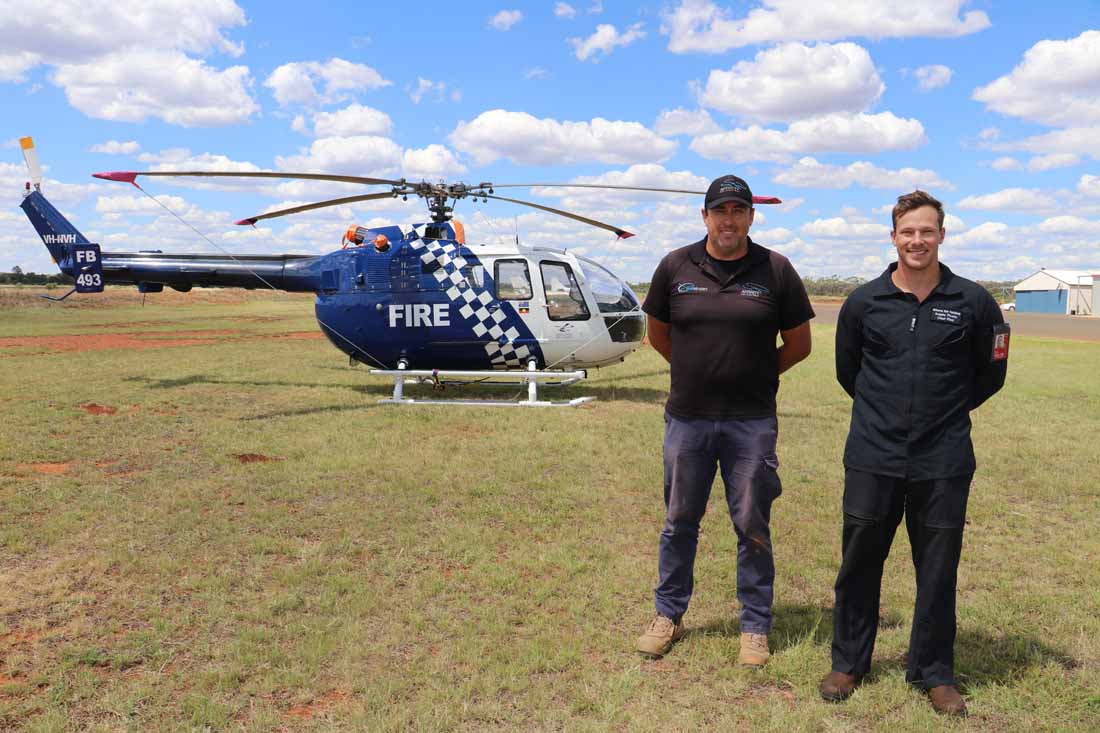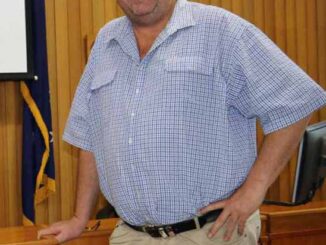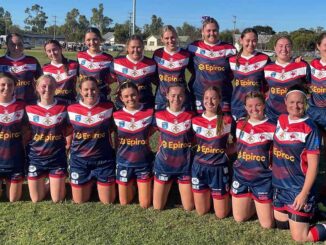
The NSW Rural Fire Service (RFS) Far West Team currently has the assistance of two helicopters (and their pilots) to help fight and map bushfires in the western region.
Dubbed the “fire trucks of the sky”, two helicopters, a Bell 427 from NSW Helicopters and a BO105 from Airborne Fire Solutions, and their pilots, have been working with the RFS on a “Call When Needed Contract” basis.
Both are currently located in Cobar, due to the recent increase in bush fire activity.
Justin Mulcahy, CEO of NSW Helicopters based in Port Macquarie, has also been helping out the State Emergency Service (SES) with flood work in the Cobar area since the middle of October.
Along with fellow pilot Angelo Picoto from Airborne Fire Solutions, they have been contracted to work in the area “as and when they are required”.
Mr Mulcahy said they choose to stay in Cobar (at their own cost) as part of their “not tasked, not required” contract they have with the RFS and other agencies.
“We’re happy to be where we’re needed,” he said.
Mr Mulcahy has also been doing some work for the Department of Primary Industries (DPI) with Crown Lands collecting digital imagery to provide a bird’s eye view of vegetation growth which is further supported by on-ground inspections with RFS to assess and map strategic placement of fire breaks and fire trails.
Acting District Manager for the RFS Far West Team, Brad Lennon, said having “eyes in the skies” has been invaluable in fighting and mapping bushfires in the region.
“Many people think that with all the rain we’ve had over the past couple of years, that everything is still green and there’s not much to burn. That’s however not the case.”
The new growth is creating a substantial risk.
“Out here, it dries off really quickly, the grass is curing at a considerable rate. Over the past few months we’ve attended numerous fires in the western area, particularly fires that have broken out due to lightning strikes.
“In addition to a number of spot fires, we had a big fire at Yimkin on December 16 and another at Mema on January 1 where we had the use of the LAT (Large Air Tanker) which is based in Dubbo during the fire season.
“Another lightning strike caused a fire just south of Mt Hope last Saturday which burnt out approximately 1,000 hectares.”
He said having the helicopters up in the air providing support to ground crew by mapping the fire (advising which way the fire is moving and at what rate) and also having the option of an aerial water delivery can help them to get on top of a fire much quicker.
Both helicopters are always prepped ready to respond and can be in the air within about 15 minutes to respond to a fire call.
“But if we’re here at the airport, then it could be just five minutes,” Mr Picoto said.
Both machines have the capacity to carry “a bucket” with 600-700 litres of water to assist with fire fighting.
They fill up “pretty much anywhere we can find water – dams, creeks, lakes and pools if we have to, any suitable water source”.
Mr Picoto explained they generally don’t take off with the bucket on as it speed limits them with the drag but instead will return to collect the bucket and fill it as needed.
“We generally have an RFS member on board who maps the fire and makes a plan.
“We can set them down and if needed go back and collect the bucket.”
Mr Picoto helped the RFS out at the fire last week near Mt Hope, which he said was about 50 minutes flying time.
“We have a fuel truck here and that went down to Mt Hope. Any time you can get a fuel asset close by makes a really big difference to the response because otherwise you lose a lot of time coming back to get fuel.
“It’s really important in these remote areas to have access to mobile fuel,” Mr Mulcahy said.
The helicopters have a flying time of about two and a half hours. “That’s a pretty standard time, travelling at 110 knots, so kilometre wise that’s about 500-600km,” Mr Picoto explained.
RFS Far West Team District Officer Greg Martin said it was very important that local landholders are prepared with their own equipment for fire fighting.
“We encourage them to ensure their pumps and equipment are regularly serviced and checked to be in good working order, that their water tanks are filled and that they carry out slashing around their homes, outbuildings, sheds and other assets,” he warned.
“We recently saw two hay shed fires in the Euabalong area, that both started on the same day.
“Both had been impacted by floods and the bottom bales started to self combust as they dried out.”


